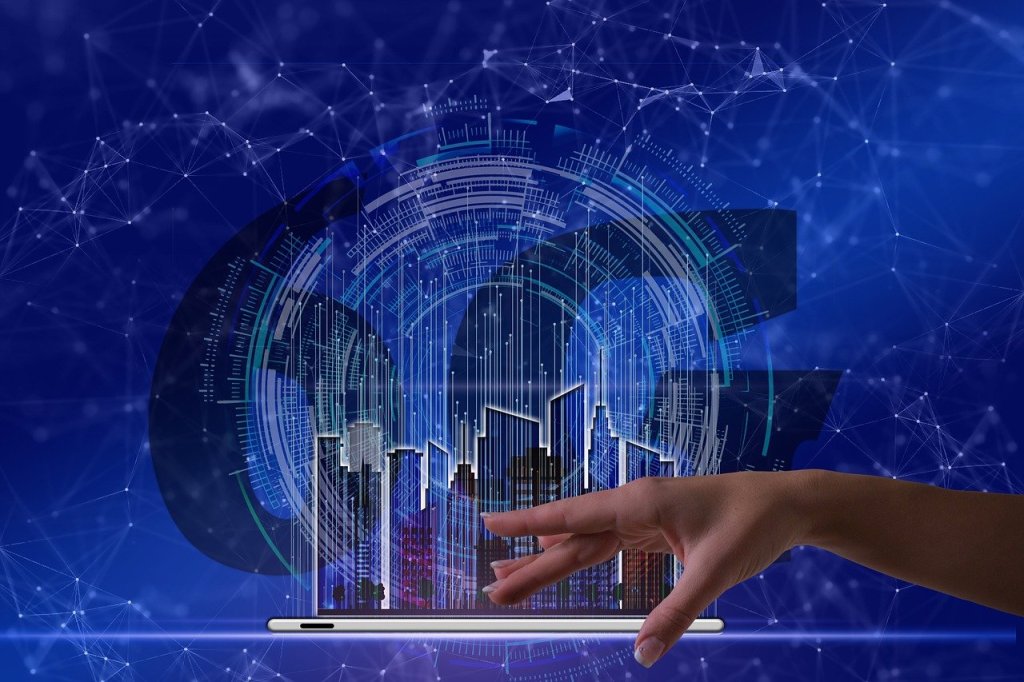6G (Sixth Generation) technology is the next advancement in wireless communication, expected to succeed 5G around 2030. It aims to provide ultra-fast speeds, low latency, and advanced connectivity for future applications like AI-driven automation, holographic communication, and smart cities.
Key Features of 6G :
- Extreme Speeds – Expected data rates of up to 1 terabit per second (Tbps), much faster than 5G.
- Ultra-Low Latency – Less than 1 millisecond (ms), enabling real-time applications.
- AI Integration – AI-driven network optimization for efficiency and security.
- Terahertz (THz) Spectrum – Uses high-frequency bands (100 GHz – 10 THz) for massive bandwidth.
- Quantum Security – Enhanced encryption and cybersecurity measures.
- Ubiquitous Connectivity – Seamless integration across land, air, and sea, including satellite communication.
- Holographic Communication – Advanced AR/VR, immersive experiences, and real-time 3D holograms.
- Smart Environments – Supports autonomous vehicles, smart cities, IoT, and Industry 5.0.
Potential Applications:
- Metaverse & XR – Enhanced VR/AR for real-world simulations.
- Autonomous Vehicles – Reliable real-time communication for self-driving cars.
- Healthcare – Remote surgery and AI-powered diagnostics.
- Smart Factories – Fully automated industrial operations.
- Global Connectivity – Satellite-based internet for remote areas.
Challenges:
- High Infrastructure Cost – Requires new antennas, satellites, and computing power.
- Power Consumption – Energy efficiency must be improved.
- Signal Penetration Issues – THz waves struggle with obstacles like walls.
- Regulations & Standards – Still in early research, requiring global cooperation.
Expected Launch – Around 2030, with test networks before then.
Which aspect of 6G are you most interested in? Here are a few options:
- Impact on Mobile Devices – How 6G will change smartphones, wearables, and personal tech.
- Impact on Industries – How 6G will revolutionize healthcare, automotive, manufacturing, etc.
- Comparison with 5G – Key differences and advancements over 5G.
- Technical Aspects – Spectrum, AI integration, and infrastructure challenges.
- Future Applications – New possibilities like brain-computer interfaces and real-time holography.
Impact of 6G on Mobile Devices
6G will transform mobile technology by making devices faster, smarter, and more immersive.
- Unprecedented Speeds – Downloading entire movies in milliseconds with speeds up to 1 Tbps.
- Instant Connectivity – No buffering, no lag, and near-zero latency for apps, streaming, and gaming.
- AI-Powered Phones – Devices will use AI to optimize battery, storage, and connectivity in real time.
- Holographic Displays – Real-time 3D holograms for video calls and entertainment.
- Brain-Machine Interfaces – Future smartphones could integrate neural interfaces for thought-based control.
- Seamless AR/VR – Phones and smart glasses will offer ultra-realistic Augmented Reality (AR) and Virtual Reality (VR) experiences.
- Smaller, More Efficient Devices – Chipsets will be more powerful, but energy-efficient, reducing heat and battery drain.
- Satellite Connectivity – 6G will enable direct communication with satellites, eliminating mobile dead zones.
Impact of 6G on Industries
6G will revolutionize multiple sectors:
Healthcare
- Remote Surgery & AI Diagnosis – Doctors will perform surgeries from anywhere with real-time precision.
- Smart Wearables – Devices will monitor health with nanotech sensors and AI-driven recommendations.
- Brain-Computer Interfaces – Neural implants may help people with paralysis or neurological disorders.
Automotive & Transportation
- Fully Autonomous Vehicles – Self-driving cars, drones, and smart roads will communicate instantly.
- Traffic-Free Smart Cities – AI-driven traffic systems will reduce congestion and accidents.
Manufacturing & Industry 5.0
- AI & Robotics Integration – Factories will run autonomously, with AI-powered robots working alongside humans.
- Zero-Latency IoT – Instant communication between machines, reducing downtime.
Entertainment & Media
- Metaverse & XR (Extended Reality) – 6G will power lifelike digital worlds with real-time interaction.
- Instant 16K Streaming – No buffering, even for ultra-high-resolution video.
Education & Workplace
- Holographic Classrooms – Remote learning with holographic teachers and 3D collaboration.
- Virtual Workspaces – Real-time 3D avatars for business meetings and remote work.
